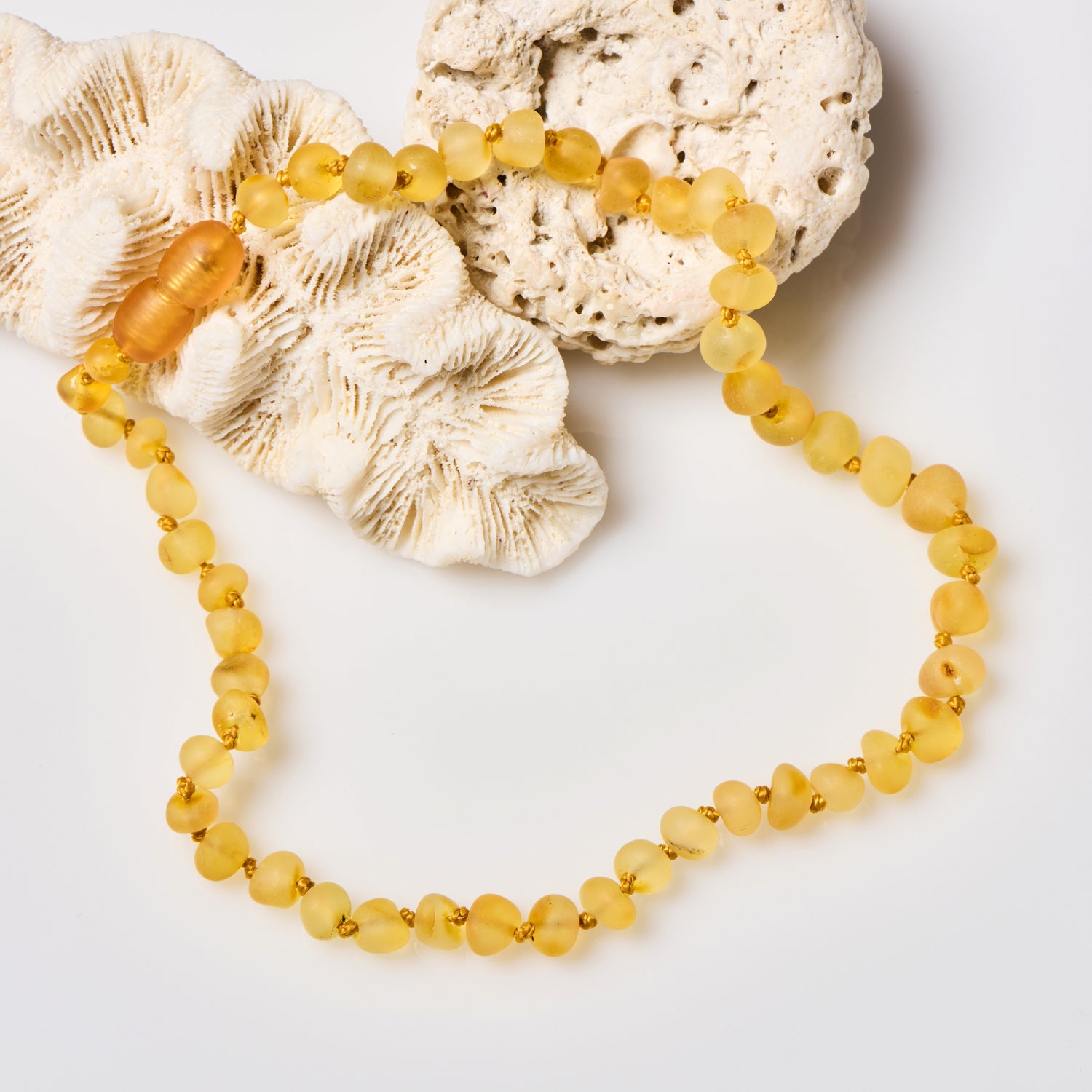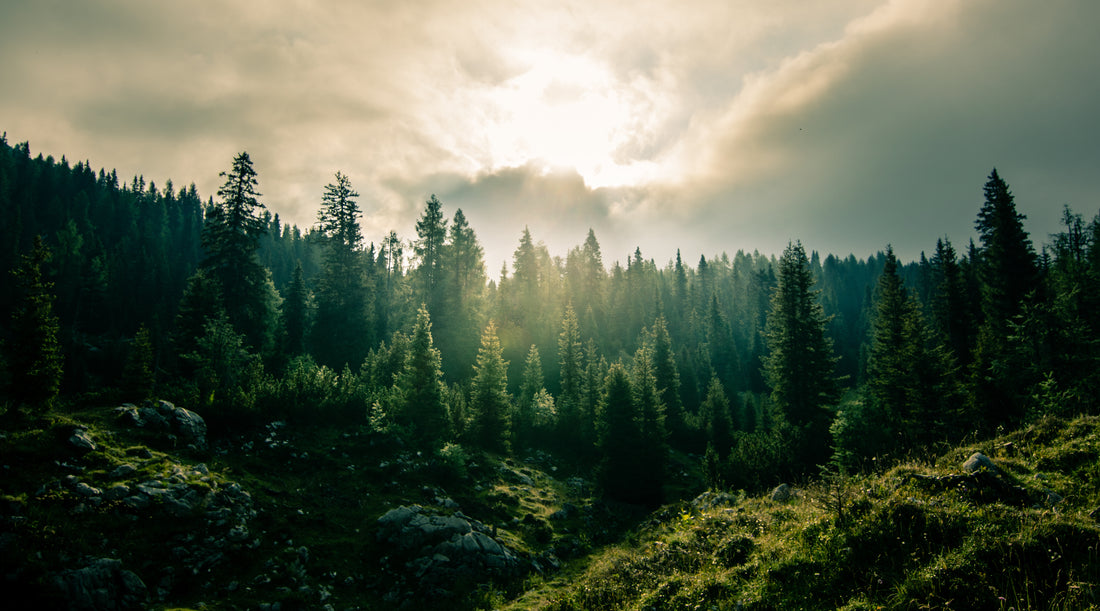The Baltic region is renowned for its diverse range of amber colors, each with its unique origin and characteristics. These variations in color are primarily attributed to the presence of organic compounds, the chemical environment in which the resin fossilizes, and geological processes. The most common colors of Baltic amber are yellow, orange, red and brown hues. Green amber, however, is one of the more rare shades of amber found in the Baltic region.
How is green amber formed?
As with all colors of amber, green Baltic amber is formed through a complex geological process that begins its journey deep within ancient forests and undergoes several stages of transformation before emerging as the luminous stone we cherish today. The formation begins with certain coniferous trees, primarily pines, which produce resin as a defense mechanism against injury or insect attacks. Over millions of years, layer upon layer of this resin accumulates on the bark of the trees.
Over time, the resin-coated trees may fall, or resin droplets can become detached and fall to the forest floor. The resin is often buried under sediment, fallen leaves, and other organic matter. The weight of subsequent layers of sediment and the pressure from the Earth's crust gradually bury and compact the resin, pushing it deeper into the ground.
As the resin is buried deeper, it undergoes a chemical transformation known as polymerization, a process that can take millions of years. During this time, the resin hardens into amber. Eventually, geological processes, such as erosion and tectonic movements, bring the amber closer to the surface. It may be found in sedimentary rocks or washed up along the shores of the Baltic Sea.
Green Baltic amber owes its hue to the interaction between the resin and organic materials like chlorophyll. When the resin is buried in sediments rich in organic matter, it may absorb compounds such as chlorophyll, giving rise to the greenish coloration. This process can also involve exposure to specific light conditions and geological factors that enhance the green tints.
In recent years, a new form of green amber has also become common on the market. The color of the natural yellow-green amber stone is enhanced and turned a more vibrant green by heating the amber in an autoclave (a heat / pressure machine). The temperature and length of time in the machine varies. This method has become widely used and accepted in the gemstone community as a way to make green amber more accessible to all.
How rare is green amber?
Natural green amber accounts for approximately 2% of all amber. Yellow-green amber tends to be more common, and the deeper green or blue-green amber hues are more rare. Green amber is often found in areas with a high content of chlorophyll-containing material, like algae and plants.
In summary, green Baltic amber's formation is a lengthy process that begins with the excretion of resin by ancient coniferous trees, followed by burial, compression, and chemical changes that transform the resin. This remarkable journey through time results in a cherished stone that encapsulates the essence of ancient forests and geological history, making it a treasure both scientifically and culturally.
Feeling inspired? Shop Powell's Owls selection of green Baltic amber jewelry:
Polished Green Baltic Amber Necklace for Adults
Polished Green Baltic Amber Bracelet for Adults
Polished Green Baltic Amber Necklace for Children
Polished Green Baltic Amber Bracelet for Children



